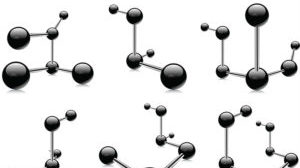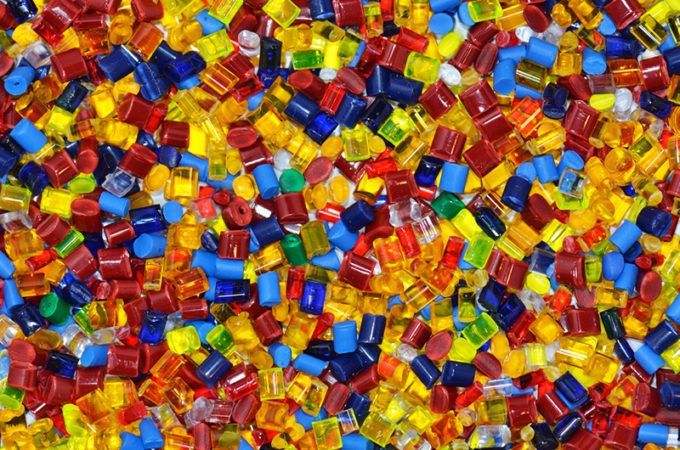We’ve talked before about how certain additives can be mixed with plastics to change their color and appearance. But plastic additives can also play a much broader role in every part of the plastic manufacturing and use cycle, modifying the creation, processing, form and function of plastics — going far beyond simply changing the color.
As you read on, you’ll learn more about why plastic and polymer additives are important, the reasons that they might be added to a formulation or a product, and what kinds of additives exist to help achieve these requirements.
Additives to change the appearance of a plastic. Before moving on to new reasons for additives in plastics, it is worth revisiting the one additive topic we’ve discussed in the past: changing a plastic’s appearance. Often, this may be desired for aesthetic or cosmetic reasons, especially in the case of consumer products. The inherent color of a polymer is typically not very attractive — off-white, brownish or semi-opaque. It’s desirable to mix in colored powders that can make the plastic look nicer to the buying public. With Pantone color matching, specific brand colors can be achieved, creating a unique and consistent look across a product line.
Plastic colorants can be required for different reasons, as well. Paramount among these are safety and regulatory concerns. Think about the bright orange of a safety cone, for example, or the rubberized, color-coded housing for electrical wires. Without these changes to the appearance of the plastic used for these products, they would not be able to fulfill their functions as safely and effectively.
Additives to increase the strength of a plastic. Different plastic polymers have different material properties, and some are undoubtedly harder and stronger than others. Additives, however, can serve to make even the strongest plastics even more durable, and thus more suitable for the wear and tear of extended use in sometimes harsh environments. Plastic automobile bumpers, for instance, are fortified with strengthening additives because otherwise they wouldn’t be able to provide much protection to the car or its passengers. Plastic airplane components must also be strengthened through additives to stand up to the stress, vibration, cold, heat and other harsh effects that they will experience throughout their use cycle.
Even plastics used in everyday household appliances are strengthened with additives, to be more break-proof or shatter-proof, and to remain functional in spite of the bumps and drops that occur in the course of normal usage. Stronger products make for happier customers who will then return to a company for other needs.
Additives to make plastics lighter. Just as additives can make a plastic stronger, they can also be added to change another physical property: the weight of a finished plastic product. In fact, many additives can serve to make a plastic both stronger and lighter. In other cases, reducing the weight of a component or an overall product can be desirable to make an item easier to handle or carry, for example. More lightweight plastic components can even make a big financial impact, drastically reducing the weight of cars and planes, and thus driving a marked increase in fuel efficiency.
Additives to make plastics safer. While most plastics are inherently safe to handle, bigger questions are raised when it comes to their use in medicine and food. Breakdown of the polymer structure of a plastic can have serious negative affects if it occurs around food, medicine or medical components for use within the human body. Stabilizing additives can serve to ensure that plastics remain safe and suitable for use in medical and food-grade uses, and that no part of a plastic’s makeup combines with medicine or food.

In fact, medical and food-grade plastics would not be possible without additives. These additives make sure that chemicals or other components of medicine do not react with a plastic container or delivery method (like needles, bags and tubes). They also keep food containers safe for use in transporting, storing, heating and cooling different types of food products.
Additives to make plastics more eco-friendly. The increased fuel efficiency mentioned above is just the beginning. While plastics are often cited as being bad for the environment — both in their manufacturing and disposal — plastic additives are creating some exciting breakthroughs and innovations that may lead to certain plastics becoming some of the more environmentally friendly materials available.
Additives, for one thing, make up a certain percentage of an item or product aside from the plastic itself. This may be an incremental difference taken one piece at a time, but in large production runs, that lowered amount of total plastic in a product’s makeup can translate to big savings in energy usage (with the bonus of lower production costs).

Polymer additives are also being developed to make some plastics able to more easily and quickly biodegrade. Some additives can be timed to have a plastic — for instance, plastic sheeting used in farming — break down over a certain planned amount of time. Since plastic is so highly modifiable at the molecular level, these products can be formulated to decompose into simple element formulations like water or carbon dioxide.
Additives to make better products. While the development of plastics has revolutionized manufacturing and industry for quite some time now, additives can serve to make these materials and the products that are made from them even better. Each of the above benefits, taken in total, overall leads to a better product and a better experience for the consumer, buyer or end user. Essentially, additives enable a plastic to better carry out its intended use.
For the manufacturer, this means happier customers who are more likely to bring repeat business — whether that customer is a consumer, a manufacturing partner or supply chain link, or someone else.
Combined with the potential for cost savings on several fronts, along with the benefits to the environment that become possible as innovation in the area of additives continues, it’s clear that plastic additives truly make a better product for everyone


